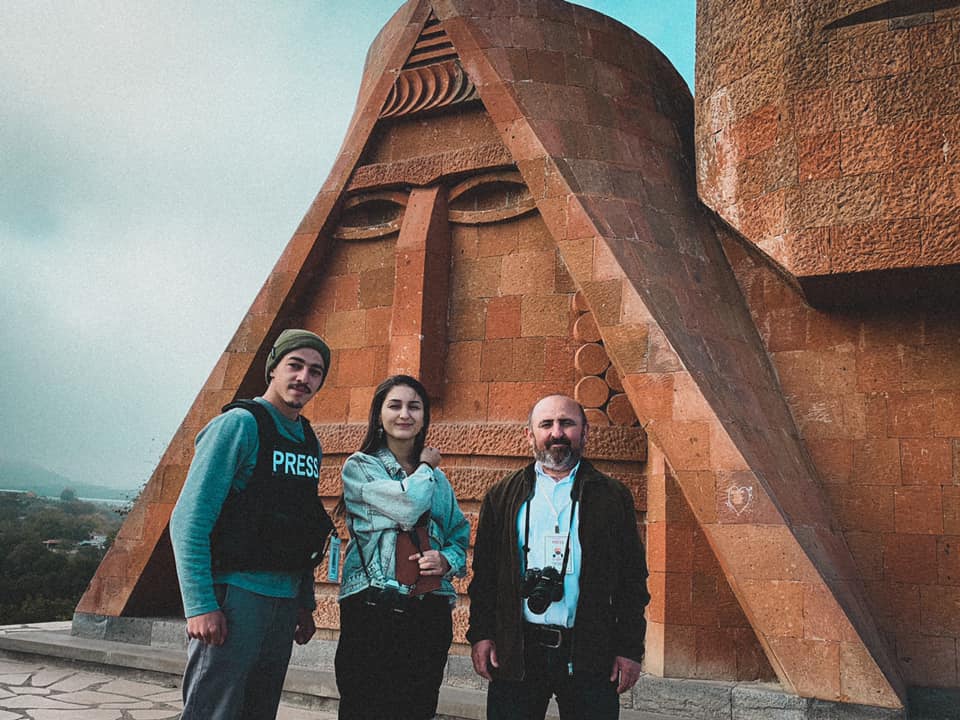Is a bulletproof vest enough? Journalists in the second Karabakh war
During the second Karabakh war in the fall of 2020, the Azerbaijani Armed Forces used modern weaponry including attack drones, which became a threat not only to military forces, but also to journalists.
Journalists and cameramen covering the war worked on the brink of life and death, realising that they could die at any moment.
Below: stories from journalists about what problems they faced during the war and what they really needed and what help they received from journalistic organisations.
- Op-ed: What’s next in Armenia – loss of sovereignty or global integration?
- During and after the war: where and how did Karabakh schoolchildren study
- Karabakh: what awaits ‘new’ and ‘old’ refugees
Journalists in next-generation warfare
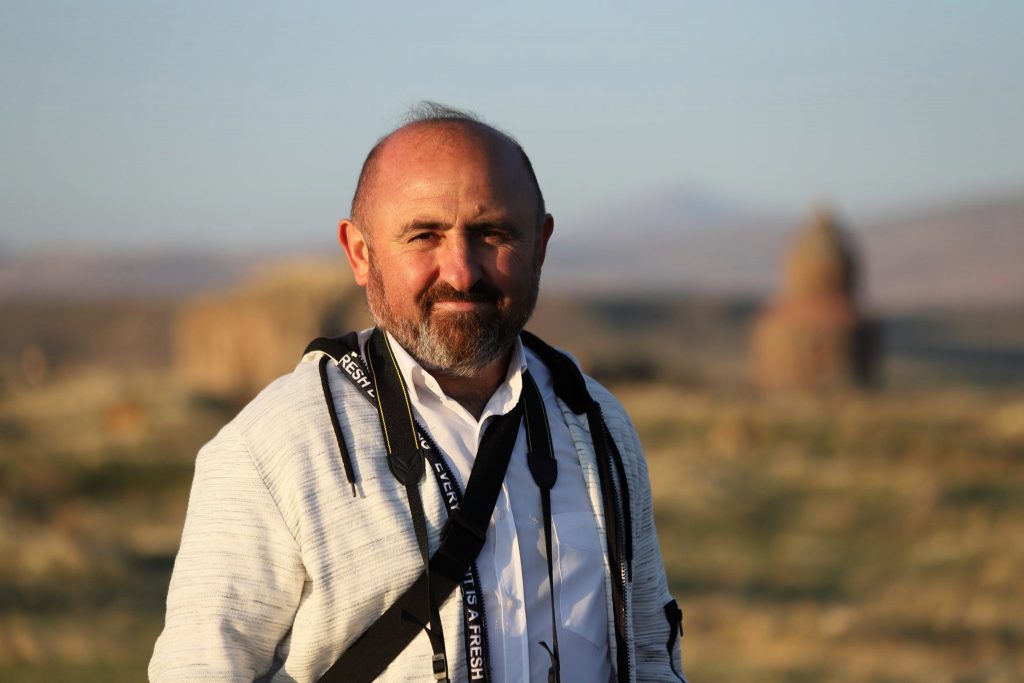
Tatul Hakobyan, an expert on the Karabakh conflict and an analyst for CivilNet witnessed the events of all 44 days of the war. He says that before leaving for Karabakh he had no idea what he would have to go through.
“Every square meter was dangerous – you couldn’t be insured against death or injury. Journalists covering the war know where to stand, how to work – there are written and unwritten rules. But in this case, they didn’t work. The Azerbaijani side intensively showered this small area with a hail of rockets, Grad installations and drones,” the journalist says.
In the early days, Tatul refused to wear a helmet and bulletproof vest, but later began to follow all the rules dictated by next-generation warfare:
“Nearby there were civilians without bulletproof vests, I was somehow uncomfortable, it’s awkward to approach people in bulletproof vests. But the moment came when I realized that it was too dangerous, began to put on both a helmet and a bulletproof vest, our editorial office provided me with everything.
And we drove cars with the windows open to hear the sound of the drone. We were warned: when you hear the sound, you will have only seven seconds to jump out of the car.”
Comparing this war to the escalation of 2016, dubbed the April or Four-Day War, Tatul says that it is impossible to draw parallels, the previous military exacerbation now seems like child’s play:
“April, by and large, can no longer be called a war. The latest hybrid war cannot be compared with any conflict in the post-Soviet space. Even journalists covering the Syrian war said: in Syria, you at least knew where to stand, how to move, how to cover events, but here it was impossible to understand anything.

24News correspondent Sevak Vardumyan also says that the security rules he was taught at university did not work in this war:
“No air raid, no warning, you are sitting – and suddenly something falls on your head. They were aiming at us from Grad system. At that moment I was not wearing a bulletproof vest and a helmet, I was in the building and thought I was safe. I was wounded in the back, but, fortunately, the splinter did not cut very deeply, did not damage the internal organs. I received a concussion and the auditory nerve was damaged.
Four shells exploded, I was injured after the third explosion, but I got up and started filming with a colleague. If I were guided by the rules, I should have kept my head down until the end of the bombing. But at this moment the journalist in you says that you are here precisely in order to record all this and show people.”
Along with him were injured an operator of TV channel Armenia and two correspondents of the French edition of Le Monde.
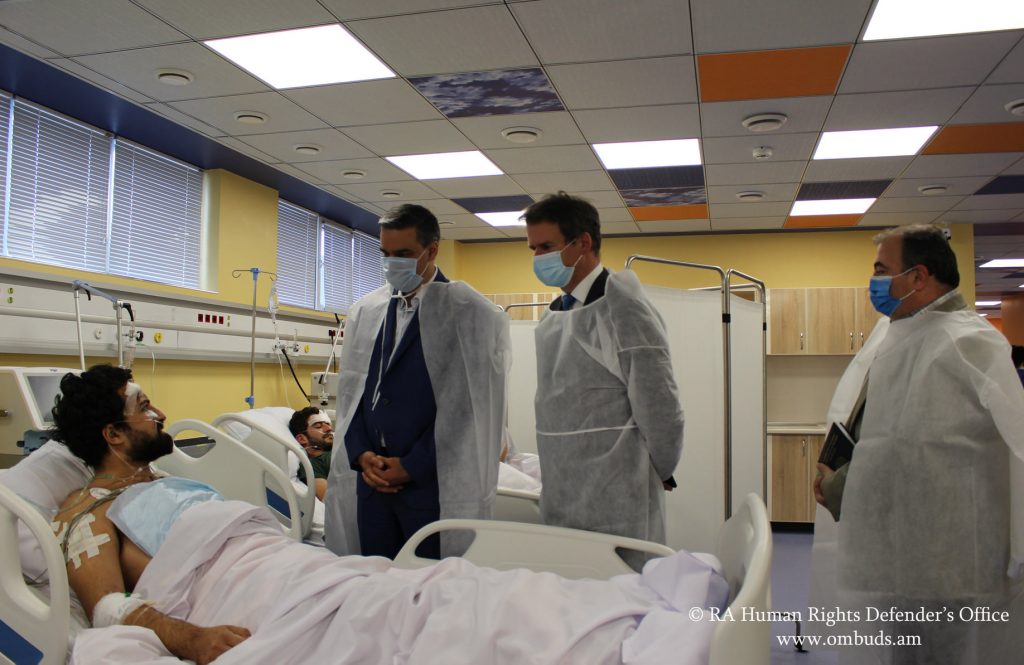
Sevak says he did not have insurance, like many Armenian journalists:
“Our editorial staff supported us in everything, but it’s better to have insurance. It would also be nice to receive special instructions, even if you know some theory and have gained your own experience in the work. In any case, you practically go to your death, the chances of surviving are 50/50, you only hope that you will somehow protect yourself.”
Protecting the rights of journalists
The Freedom of Information Center intends to submit a complaint to the European Court of Human Rights in connection with the wounding of seven Armenian and foreign journalists during the war, who were carrying out their duties.
“Now we are working to ensure that no violation is left without consequences. We are talking about Armenian, Russian and French journalists. One of the French is Armenian by nationality, and this causes difficulties in choosing the strategy of the complaint,” says the head of the center Shushan Doydoyan.
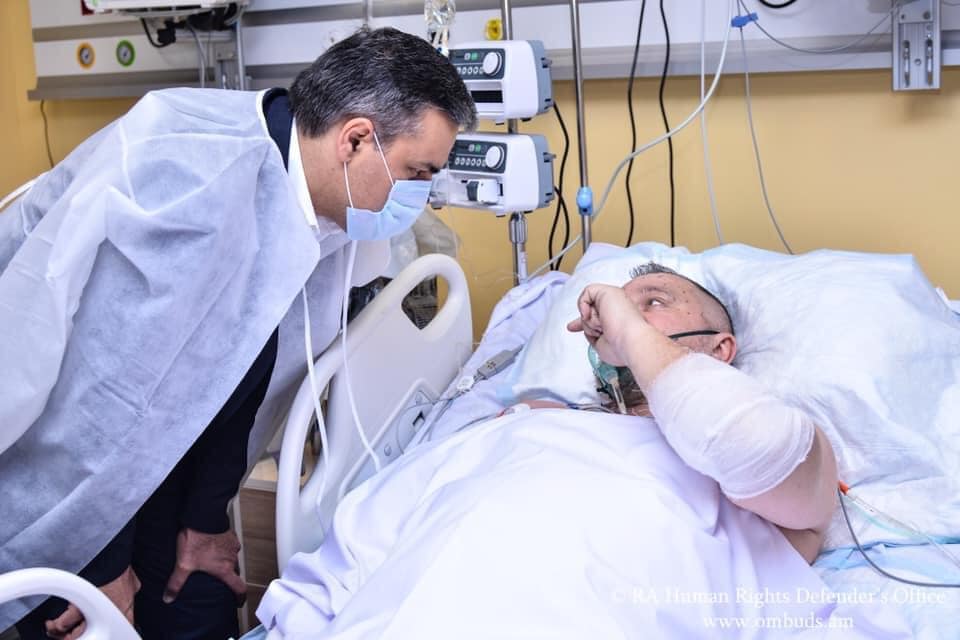
According to her, the British organization Media Defence provides legal assistance to the center:
“They have lawyers who specialize specifically in working with the European Court of Human Rights, they have a lot of experience, we count on their help. The journalists were constantly under surveillance, they were persecuted, it is a matter of protecting their right to life.”
Sevak Vardumyan believes that the Azerbaijani Armed Forces deliberately and purposefully fired at journalists. In this regard, recalls the shelling of a car carrying reporters from Agence France-Presse (AFP), which bore the inscription ‘Press’.
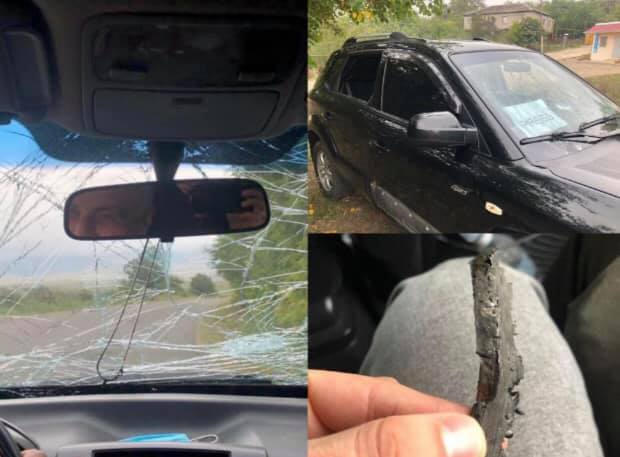
Moreover, the Azerbaijani side did not deny the shelling of journalists covering the military operations in Karabakh. Assistant to the President of Azerbaijan, Head of the Foreign Policy Department of the Presidential Administration Hikmet Hajiyev explained his country’s position as follows:
“I would like to note with regret that Armenia, attracting foreign journalists to the occupied territories of Azerbaijan, turns them into a target. Visits to our territories without the permission of Azerbaijan are illegal. For this reason, Azerbaijan is not responsible for the safety of these persons.”
The information center in the capital of Nagorno-Karabakh changed its location four times in three weeks.
“Why? Because we had no doubt that Azerbaijan would stop at nothing and hit the building where press conferences are held and hundreds of journalists gather,” journalist Tatul Hakobyan said.
At the beginning of the war, many Armenian journalists and publications raised the issue of the shortage of body armor and helmets. Journalistic organizations tried to help them.
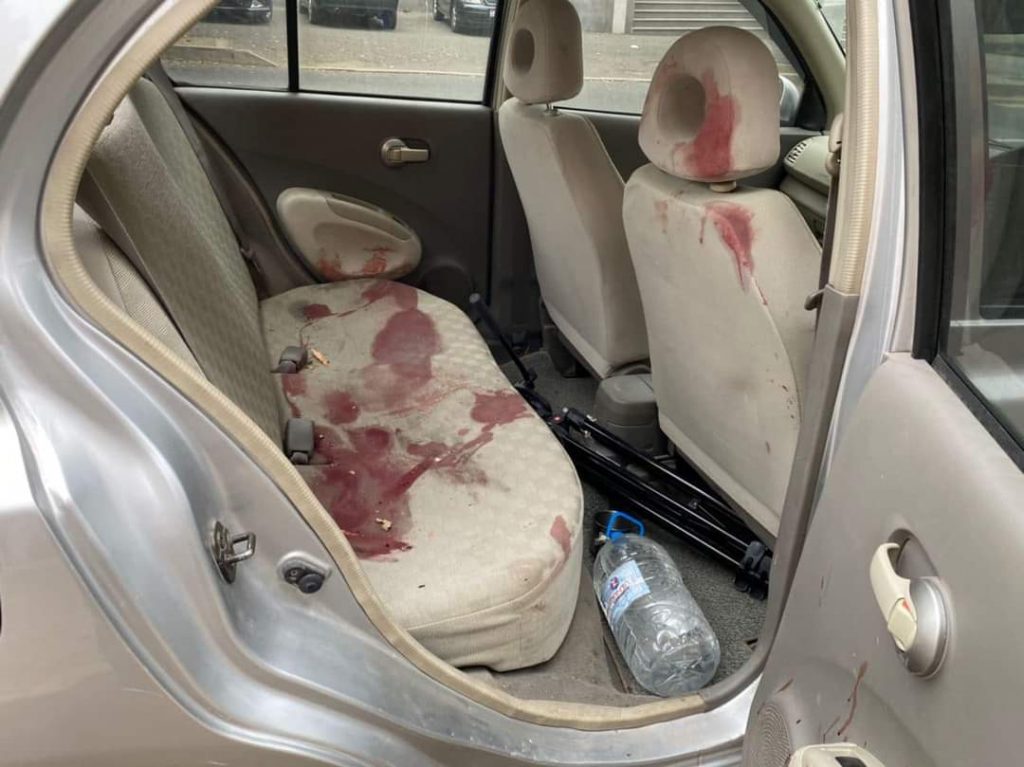
“Back in 2016, we purchased body armor and helmets, we had 18 sets, but that was not enough. And we were glad that our partners were also able to find opportunities to complement the existing means of protection, ”says Director of the Media Initiatives Center Nouneh Sarkissyan.
In addition, during the war, the organization provided small grants to about 10 Armenian media.
“We have had savings in some of our projects and have been able to discuss this with donors and create emergency funds. As a result, we gave small amounts to publications so that they could solve the most important problems for themselves. This process continues. The grants are short-term, in the amount of 2-3 thousand dollars. We are grateful to our donors for their flexibility and willingness to help,” says Nouneh Sarkissyan.
Shushan Doydoyan, head of the Freedom of Information Center, emphasizes that it was difficult to acquire body armor and helmets during the war, since they are considered military goods:
“Georgia closed the border for such goods, but we managed, overcoming all difficulties, to import them into Armenia with the assistance of the organization“ Journalists without Borders ”. Moreover, we provided means of protection not only to local, but also to foreign journalists, because they were unable to enter the country with their bulletproof vests – because of the same ban.”
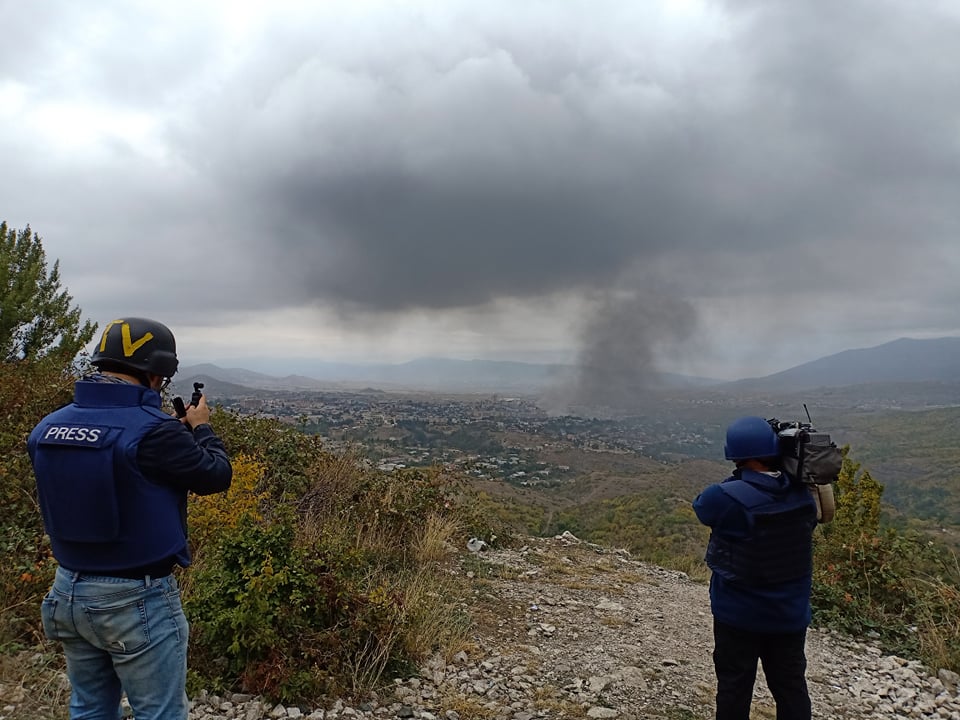
Professional problems
Along with security issues, journalists covering the war had to solve professional problems related to obtaining and disseminating information.
Journalist Tatul Hakobyan admits that every day he was in conflict with himself – whether he is a journalist or a victim of propaganda:
“There have been times when I preferred to submit to propaganda rather than remain in my position as a journalist. And the law on martial law also prevented me from doing my job.
I was constantly thinking about not doing something in which the authorities, say, would see something similar to a crime. Moreover, in those days I already began to criticize the Armenian authorities and thought that they could find scapegoats. And that also bothered me. “
He recounts that he resorted to various tricks to convey the truth to his audience:
“On October 19, on my page on the social network, I posted a video and wrote a status that Azerbaijan approached the border of Syunik [southern region of Armenia], since then they had actually already entered Zangilan and Qubadli.
Armenian Facebook users should have hated me, but I knew I was giving accurate information. And I wrote about it before the official announcement came out. And in order to soften the reaction to my post, before and after it, I posted the materials of the press secretary of the Ministry of Defense. I showed that official sources represent the situation like this, and I give this information. I could not hide the truth.
